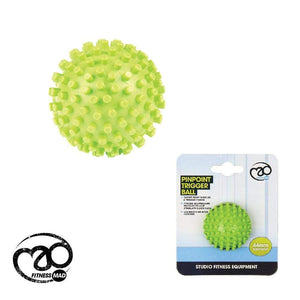It’s your choice - with our knowledge.

Product Insights
Discover more about the products in this article

Balle de déclenchement PinPoint
Featured Products
Gestion de la fasciite plantaire chez les coureurs
La fasciite plantaire est une affection courante qui provoque des douleurs au talon, aussi bien chez les coureurs que chez les non-coureurs. Elle survient lorsque l'aponévrose plantaire, l'épaisse bande de tissu qui longe la plante du pied, du talon aux orteils, s'enflamme. Cette inflammation peut provoquer une douleur vive et lancinante, notamment lors des premiers pas le matin ou après une longue période assise.
Causes et facteurs de risque
Surutilisation et stress
Les étirements et les déchirures répétitifs peuvent irriter ou enflammer l’aponévrose plantaire, en particulier chez les coureurs qui augmentent leur kilométrage trop rapidement ou dont les pieds n’absorbent pas bien les chocs.
Structure du pied
Les personnes ayant les pieds plats, des voûtes plantaires hautes ou des schémas de marche anormaux sont plus susceptibles de souffrir de fasciite plantaire en raison d’une répartition inégale du poids en position debout et en marchant.
Chaussures inadaptées
Le port de chaussures qui n’offrent pas un soutien ou un amorti adéquat peut contribuer à l’apparition d’une fasciite plantaire.
Symptômes à surveiller
Le symptôme le plus révélateur de la fasciite plantaire est une douleur aiguë sous le talon, généralement plus intense lors des premiers pas au réveil ou après de longues périodes de repos. La douleur peut également s'aggraver après une activité prolongée, mais généralement pas pendant l'activité elle-même.
Prévention et gestion
Choisir les bonnes chaussures
Portez des chaussures offrant un bon maintien, un bon amorti et un bon ajustement. C'est essentiel non seulement pour la course, mais aussi pour les activités quotidiennes.
Chaussettes spécialisées
Des chaussettes telles que les chaussettes de soulagement de la fasciite plantaire Feetures à coussin léger et languette invisible sont conçues pour fournir une compression intense dans des zones spécifiques du pied afin de soulager la douleur au pied.
Exercices d'étirement
Des étirements réguliers du tendon d'Achille et de l'aponévrose plantaire peuvent soulager la douleur. Des étirements doux avant le lever et tout au long de la journée éviteront la raideur de l'aponévrose plantaire. Vous pouvez utiliser un équipement comme la balle PinPoint Trigger Ball , idéale pour cibler les muscles des pieds.
Exercices de renforcement
Le renforcement des muscles des pieds et du bas des jambes peut également aider à stabiliser votre cheville et votre talon, réduisant ainsi la tension sur le fascia plantaire.
Options de traitement
Repos et glace
Dans un premier temps, réduisez les activités qui vous font mal au pied. Appliquez de la glace sur la zone affectée pour réduire la douleur et le gonflement.
Médicament
Les anti-inflammatoires non stéroïdiens (AINS) peuvent aider à réduire la douleur et l’inflammation.
physiothérapie
Un physiothérapeute peut vous conseiller des exercices pour étirer et renforcer les muscles du bas des jambes et le fascia plantaire.
Traitements avancés
Si les symptômes persistent, des traitements plus avancés tels que des injections de corticostéroïdes, une thérapie par ondes de choc ou une intervention chirurgicale peuvent être envisagés.
Quand consulter un médecin
Si la douleur ne s’améliore pas après quelques semaines de traitement à domicile et de repos, il est conseillé de consulter un professionnel de la santé pour explorer d’autres options de traitement et assurer un diagnostic précis.
La prise en charge efficace de la fasciite plantaire nécessite une approche globale incluant des chaussures adaptées, des exercices réguliers d'étirement et de renforcement musculaire, un niveau d'activité adapté et, si nécessaire, un suivi médical. En traitant la maladie précocement, les coureurs peuvent maintenir leur niveau d'activité et réduire les risques de récidive.
It’s your choice - with our knowledge.






































































































